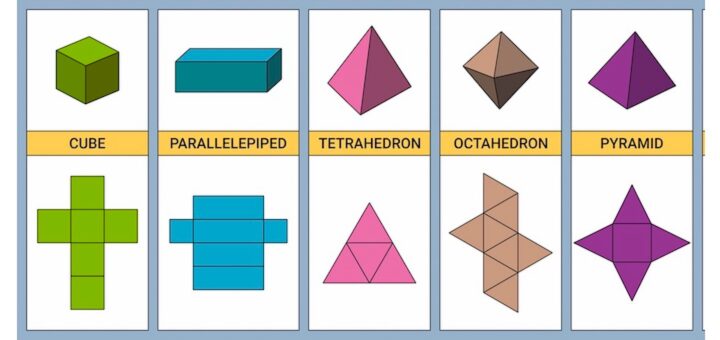Hands-On Math Helps Keep Students Engaged
By Kathleen Palmieri

My fifth graders are ready for sun and fun, but I’ve discovered there are ways to help them hold onto their math minds and engage them for a bit longer.
Here are a few things I’m doing to help extend the learning.
Hunting for Geometry
This idea is nothing new, but with some fine tuning to meet your students’ needs it can make reviewing geometric shapes a lot of fun.
As I planned, I began by looking at the properties of shapes that my students have been learning. I decided to build an old fashioned scavenger hunt with geometric shapes and angles.
I chose basic shapes such as a square and rectangle, eventually adding quadrilaterals, rhombus, trapezoid, and the Scalene triangle. I threw in a few angles such as acute, obtuse, right, and then math vocabulary words like vertex and line segment to make it a bit more challenging.
I chose a beautiful morning in May to unleash this exploratory math activity. Keeping the directions basic, I simply asked students to search for examples of the shapes, angles, and lines on our school playground.
They were each equipped with a clipboard, the activity sheet I made, and a pencil. They had the choice to work together or alone, and were aware we would share our findings back in the classroom.
The students embraced this activity and amazed me with their intricate findings and use of properties in describing where they found each shape or angle. The debriefing back in the classroom was amazing as students shared what they found and related their findings to the properties of the shapes and angles.
Wrangling Shapes
This activity is one that I found on the youcubed.org site. Youcubed is co-founded by Dr. Jo Boaler, a popular author and Professor of Mathematics Education at Stanford University. “Building Shapes” is a team building activity where students work together using a single piece of string or rope to create a 3-D shape. (You’ll find links to several how-to YouCubed downloads embedded below.)
While team building is usually a beginning of the school year activity, it can truly help to reacquaint students with how to work as a team. Boaler’s activity starts with her mindset video Strategies for Learning Maths to remind students how to think through problems (you can explain to students that the British add an “s”).
Then the activity is explained. There are four rules that students must follow. They can decide how to organize themselves:
- Everyone in the group must have at least one hand on the rope at all times.
- You cannot untie the rope.
- You must use all of the rope for each shape.
- Convince the teacher that your shape is accurate.
There is an important role – Skeptic – that will eventually be assigned, but it is important that the teacher model the role first. Suggested “skeptic” questions include:
- What are the characteristics of the shape you built?
- How do you know it’s a __________?
- How can you prove those two segments are congruent?
- How do you know that’s a Right angle?
- How do you know those angles are congruent?
These suggested questions are basic to complex, but it is important to challenge all students. I find that at times some of my struggling math learners can really dig into the more complex questions and build their math confidence in doing so.
After time is up, it is really beneficial to have groups volunteer to share and model a shape. Here’s where a student can take the role of Skeptic to ask the group a question about how they created the shape and ask for proof that it is really the shape they say it is.
The instructions from youcubed.org go into detail about how to extend this sharing and the integral part proofs play in mathematics.
Extending the Learning
The shape-building activity is one that may go on for a few math periods and lends itself to students becoming creative, wanting to build more than the shapes assigned.
I have found that students love to look for the proof in their problem solving, and this very engaging hands-on activity is a favorite. There are handouts that are provided along with explicit instructions about using a 7-8 foot piece of rope and the specifications of how it is tied to the shapes to be made.
Students love to explore and work on hands-on math activities. I would highly suggest you check out the youcubed.org site for more engaging activities for your students.
Kathleen Palmieri is a National Board Certified Teacher and NBCT Professional Learning facilitator. She is a fifth grade educator in upstate New York who reviews and writes regularly for MiddleWeb. With a passion for literacy and learning in the classroom, she participates in various writing workshops, curriculum writing endeavors, and math presentations.
As a lifelong learner, Kathie is an avid reader and researcher of educational practices and techniques. She collaborates with colleagues and globally on Twitter @Kathleen Palmieri NBCT and expands her education adventures at her personal blog www.kathleenpalmieri.com.

































I just finished reading your blog post on the importance of hands-on math in keeping students engaged, and I couldn’t agree more. Your insights on the effectiveness of incorporating hands-on activities in math instruction to enhance student understanding and motivation are spot-on. By providing concrete experiences and interactive learning opportunities, students can develop a deeper conceptual understanding of mathematical concepts and improve their problem-solving skills. Your practical tips and suggestions for implementing hands-on math activities in the classroom are invaluable. Thank you for advocating for a student-centered and engaging approach to math education. Great work!